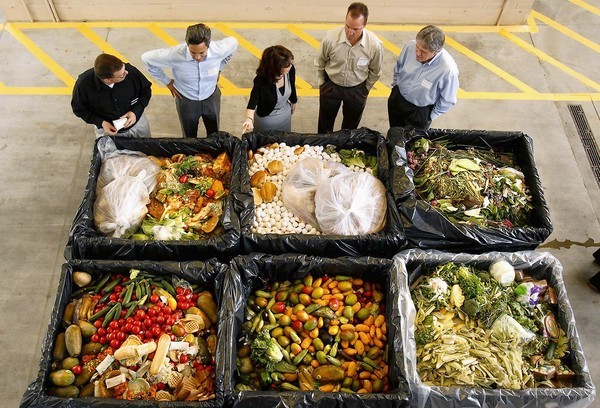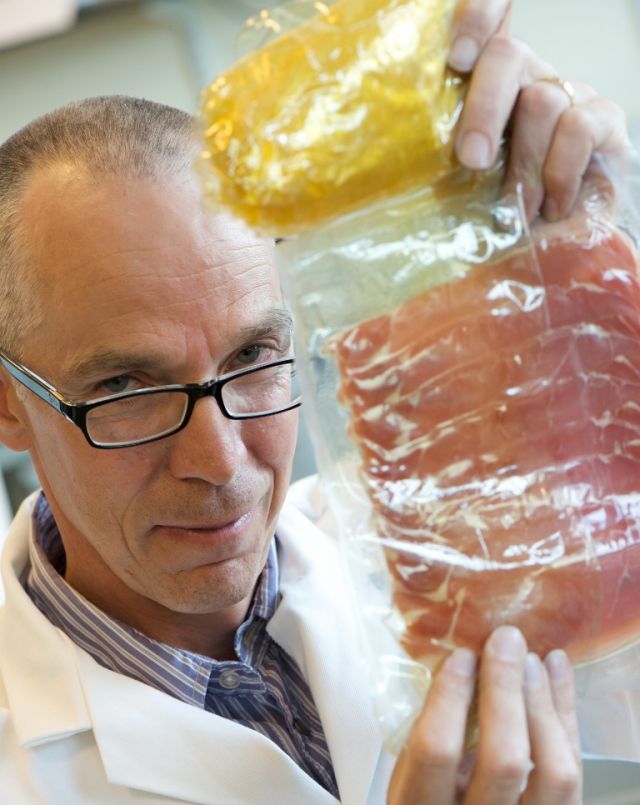Before the product reaches the buyer, he overcomes the long life cycle, starting with the extraction of raw materials and preparing them for production, preparation of the product and its processing. After the product is processed and ready for use or use, it must be packaged or formed into a form convenient for transportation. After completing these steps, he goes to the storage warehouse. All of the above stages of gastrointestinal tract are accompanied by its changes, both qualitative and quantitative. In the process of creating a product and after its manufacture, enterprises inevitably suffer commodity losses.
What it is?
Loss of goods in quantitative or qualitative terms is the loss of goods. They arise in any production and product sales. The result of commodity losses are material losses, which are expressed in monetary terms in kind. Depending on at what stage the actions took place, which led to a decrease in the cost of the batch, the amount of losses varies, since at different stages of the LC, the cost of the product is different. At the stage of production and preparation of the presentation, the loss will be less than that if it had already been transported and stored in storage. As you can see, such losses in material terms completely depend on the cost of goods at the time of their occurrence.
The relationship between the amount of losses and their value is very close and affects the economic condition of the enterprise and the price of the consignment. Often the cause of loss is the human factor. In this case, the company does not lay them at cost.

Types of commodity losses
The main loss of goods can be divided into:
- high quality;
- quantitative.
It is important to note that the quality of the product is its main characteristic. It is based on this that the demand for the product is formed. Consumers choose a product suitable for them, relying primarily on its properties. If you lose the proper level of quality indicators, the product automatically goes into illiquid. Unit costs are also of great importance in shaping consumer demand.
Quantitative commodity losses carry no less damage for trade enterprises serving areas and production facilities. The rate of physical reduction of a product in a batch depends on many factors that can be minimized.
Any company engaged in the production and sale of goods, seeks to reduce both types of costs. Only in the case of an established process of enterprise activity, technical support and well-coordinated work of personnel can large commodity losses be avoided.

Quantitative
Losses in the quantity of goods are called natural. They are associated with a decrease in the length, volume, weight of the object. These include all quantity indicators with which a specific product can be characterized. The main causes of such losses are shrinkage, bout, spill, spray, volatilization, respiration and absorption. Separate waste.
All these processes are inevitable, they arise at different stages and are written off when accounting for inventory balances. Reducing such losses is impossible. Therefore, there are norms for calculating commodity losses. There is a decrease associated with preparation for sale (cutting clips on sausages), and natural (shrinkage of moisture-containing products).
Natural quantitative losses
Inevitable losses include:
- Shrinkage - takes from 40 to 100% of the total loss.This is the process of evaporation of moisture as a result of exposure to the product environment. It is characteristic for food.
- Spraying is characteristic of products that are finely chopped (for example, flour, cereals, salt, cement, sand). Loss occurs due to shaking or spraying of a part of the product.
- Liquid absorption - the fat or water fraction seeps out and is absorbed into the package (oil, pickled vegetables, fish, halva, etc.).
- Volatilization - occurs due to the content of flavored and volatile substances in the product.
- Bottling - product residues on the container walls.
- Breathing is characteristic of vegetables and fruits, cereals and flour.
Reducing natural commodity losses is almost impossible. They can be minimized, but by insignificant indicators.
Decline in preparation for implementation
With pre-sale losses, liquid and illiquid costs are possible. Separate the violation of the integrity of the containers of liquids. The fight is only possible for goods that are stored in glass or plastic containers. Usually it is alcoholic products, juices, water, perfumes. Conditionally share liquid losses and illiquid.
Pre-sale losses with subsequent use
Liquid losses are characterized by compensation of their value due to recyclables. For example, trimming from fish (head, tail, fins), bones after trimming smoked meats.
All trimmings and parts of food waste can subsequently be sold to the retail buyer or a part of their value can be returned upon return for processing or recycling. You can give away for processing containers for sour cream, cottage cheese or other products. Non-food items can also be recouped if, for example, cardboard boxes are sold in which lots are delivered.
Charged Losses
Often, when packaging and selling a product, there is a small percentage of weight loss. These unavoidable costs are characteristic of food products.
Illiquid losses are part of the product or its packaging, which is not subject to subsequent sale. This may be the packaging of cheese, loops and clips of sausages, cutting the weathered and damaged parts of the goods.

Quality
The loss associated with a decrease in the quality of the goods is caused by biological, chemical and microbiological processes. This is primarily damage to the goods due to depressurization of the packaging or the expired implementation period.
The biological effects of rodents and insects. A chemical change in the composition of the product is a consequence of non-compliance with storage conditions. This may release fat or age the product. Pastries are prone to this. As a result, the product acquires a specific smell and taste.
The causes of commodity losses
The main costs due to a decrease in the quality and quantity of the product the company suffers during the transportation of goods and their storage.
Manufacturers always indicate the storage conditions of the products. Strict adherence to these recommendations will reduce commodity losses to the smallest value. How to do it?
| Factors | Change Properties | Type of change | Ways to minimize |
| Temperature | Freezing liquids, fragility of packaging at low temperatures. High temperature melting, decomposition, drying and evaporation | Fighting, cracks, peeling of labels, drying out, separation of the product into its component (for example, milk), spoilage of the product, battle of containers, packaging leakage Polymer aging, deformation, oxidation, aging of goods | Store products without stress on it. Maintaining the manufacturer's recommended temperature. Refrigerated Transportation |
| Sun exposure | Foods Decay | Change the color, taste and smell of the product Stains Damage and burnout of packaging Drying | The packaging must be made of materials that are resistant to solar radiation. |
| Biological factors | Insects, rodents, mold and fungus | Rotting, decomposition, deterioration of the product and packaging | Quality packaging that prevents bacteria from entering. Sanitization of pest storage areas |
| Atmosphere around | Presence of hydrogen sulfide, sulfur dioxide or chloride gas | The appearance of electrolytes | Coating with lubricants and anti-oxidants |
| Chemical exposure | Deformation of the packaging, damage to the product | Swelling, corrosion, leakage of products | Packaging must be resistant to chemicals. |
| Humidity | Swelling, deterioration of the product and packaging, hydrolysis, change in product properties | Loss of packaging color, damage to moisture-resistant materials. Food swelling | Sealing the packaging. Airing and heating in the winter |
| Air exposure | Changes to products that cannot be fixed | Oxidation of fats, stale bakery products and confectionery products, wicking, drying | Protective packaging |
| Loss of properties | Loss of natural product odor Foreign odors | Volatilization and absorption | Evacuation of goods and hermetic packaging |
All changes that occur with the product during its storage, reduce its value. The organization suffers losses, or they fall on the buyer. And this, in turn, reduces demand. For companies with inventory, it is important to take care of the safety of goods and providing them with storage conditions.

Each group of TK (inventories) has its own causes of commodity losses. For example, a non-food group is less exposed to air or biological factors. Food, on the contrary, is subject to almost every one of the above factors. It should be noted that the storage time for all products is different.
Norms
Losses of different groups of goods have their own values. Rationing of losses is characteristic only for natural commodity losses. Quantitatively, you can calculate shrinkage, spraying per tonne of goods or spills. Based on the regulatory data that were generated during the observation and research, there are indicators of natural decline. The determination of the weight of cereals lost during storage is calculated by the formula:
X = AB / 90, where
X is the desired indicator;
A - loss rate up to 90 days;
B - the average number of days of storage.
If the period exceeds three months, then the indicator is adjusted for the difference between the highest rate and the average (up to three months), taking into account the full shelf life.
Loss accounting
The legislation establishes the magnitude of the decline, which is typical for goods in different climatic conditions.
Accounting for product losses is carried out at all enterprises and organizations. In the formation of tax liabilities, such losses are written off as distribution costs and are not subject to interest tax rates.
Order No. 34 "On the Approval of the Regulation on Accounting and Financial Reporting in the Russian Federation", adopted in 1998 by the government of the Russian Federation, regulates the amount and procedure for writing off goods losses. Based on which:
- the loss is written off to the costs of the enterprise by order of the head of the business unit;
- if the losses exceed the established norms, then their write-off falls on the responsible persons.
In case of failure to identify the perpetrators or a judicial refusal to plead guilty, the account of commodity losses falls on 91 account “Other income and expenses” and is reflected in column 94 “Shortages and losses from damage to property”.

Loss minimization
Loss of presentation of the goods more often serves as a reason for writing off such losses. In order to avoid violation of the integrity of the packaging, it is necessary to organize the correct delivery and storage of the product. Machines for transportation should be equipped with compartments for transportation, packing of goods in a car should be carried out according to the loading rules.
Warehouse is equipped with shelves and racks.The same applies to cold stores. Each box with the goods should be placed in such a way that there is no additional load on it. That is, you can not install them on top of each other. Especially if the product packaging has the property of deforming.
Unloading, as well as the battle in the trading floor when laying out the goods, is no less important. According to statistics, for this reason, more than 20% of the total volume of commodity losses occurs.
In addition, for the safety of goods, it is necessary to comply with all norms and rules of storage. This will avoid quality losses.

Inventory
Information about the balances in warehouses storing goods determine the quantitative indicator of losses. The cash nomenclature is recalculated based on the regulations established for enterprises, but at least once every three months. In order to identify shortages and losses, employees recount each unit of goods and transfer data to the warehouse accounting department.

When comparing the obtained data, a study is carried out of the causes of the formation of shortages and the adoption of management measures if the value exceeds the indicators of natural decline.
